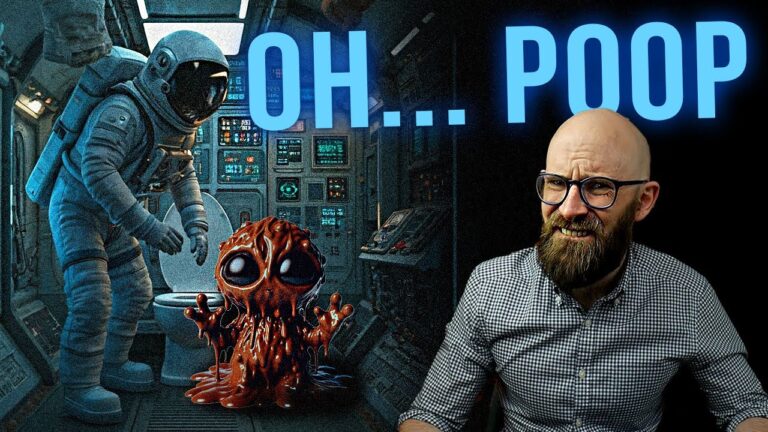“Gravity-Defying Dilemmas: The Ingenious Solutions Astronauts Use to Conquer the Ultimate Space Challenge!”
Stafford: “Mine was a little more sticky than that. Throw that away.”
Young: “God Almighty” (laughter)
Cernan: “Here’s another goddam turd. What’s the matter with you guys? Here, give me a —”
(laughter from Young and Stafford)
Stafford: “It was just floating around?”
Cernan: “Yes.”
Stafford (laughing): “Mine was stickier than that.”
Young: “Mine was too. It hit that bag —”
Cernan: “I don’t know whose that is. I can neither claim it nor disclaim it (laughter).”
Young: “What the hell is going on here?”
Just who was responsible for this close encounter of the turd kind remains a mystery to this day, though we did a deep dive investigation on it and our theory of who done it in our video To Boldly Go Where No Fecal Matter Has Gone Before if you care to watch after this video.
And even if waste remained safely inside the bags, with space inside the Gemini and Apollo capsules at a premium, finding storage for used bags and other trash quickly became a challenge. This lack of adequate waste disposal led Gemini V astronauts Leroy “Gordon” Cooper and Charles “Pete” Conrad to dub their August 1965 mission “eight days in a garbage can.” Gemini VII astronauts Frank Borman and Jim Lovell fared even worse, orbiting the earth for 14 days in a space no larger than the front seat of a Volkswagen Beetle with no good way of disposing of their trash. Yet despite their enduring notoriety, FCAs remain in use to this day as a backup in case the space toilets aboard the ISS fail.
By the end of the 1960s, it became clear that if astronauts were to spend long periods of time in space, they needed a more comfortable – and dignified – means of answering nature’s call. The Soviets were the first to fly a proper space toilet, which has been standard equipment on the Soyuz spacecraft since its maiden flight in 1967 – and to learn more about this flight’s tragic ending, please check out our previous video The Most Disastrous Space Mission Ever Executed. This installation was made possible by the Soyuz’s large elliptical orbital module, which sits above the bell-shaped descent module and is jettisoned just before reentry. Like nearly all space toilets developed since, the Soyuz facilities consist of two main parts: a suction hose with a funnel for collecting urine, which is vented into a chamber lined with absorbent foam; and a commode which uses a fan and airflow to suck faeces into plastic bags, which are then sealed and stored onboard.












